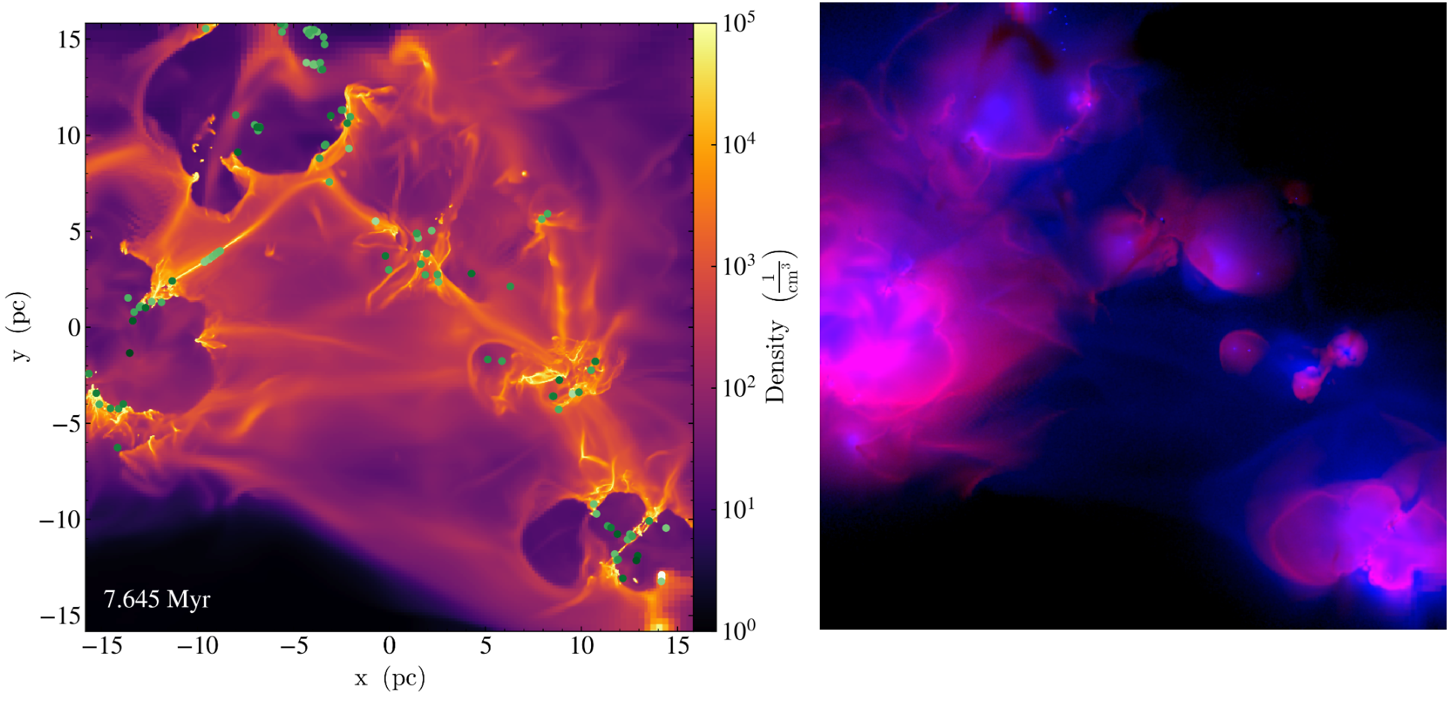
A framework for synthetic observations from 3-D hydrodynamics simulations
This project aims to develop a Python package to post-process 3-D hydrodynamics simulations (e.g., from RAMSES or Quokka) to create synthetic observations for JWST/HST/VLT.
Project status
Content navigation
About
Recent advancements in 3D hydrodynamics simulations, using codes such as RAMSES and Quokka, have significantly deepened our understanding of complex astrophysical processes, from star cluster formation to galaxy evolution. These simulations generate vast amounts of data, capturing the intricate details of fluid dynamics, radiation transport, magnetic fields, and stellar feedback. However, interpreting this data in the context of observations remains an underdeveloped area.
This project aims to address this challenge by developing a versatile Python package to post-process simulation outputs from popular grid-based hydrodynamics codes, including RAMSES and Quokka. The package will produce synthetic observations of dust continuum and line emissions. These outputs will enable direct comparisons with real-world data from telescopes such as the JWST, HST, and VLT. To achieve this, we will integrate Monte Carlo radiative transfer codes such as SKIRT and RADMC-3D.
The student working on this project will:
1. Develop a post-processing pipeline to convert simulation outputs from RAMSES and Quokka into formats suitable for radiative transfer calculations using SKIRT and RADMC-3D.
2. Learn advanced modular Python package development skills, applying best practices in code structure, documentation, and version control.
3. Write Python scripts for basic line-of-sight radiative transfer of atomic and molecular lines from uniform-grid simulation data.
4. Contribute to an ongoing research project studying the escape of ionising photons in simulated dwarf galaxies and creating synthetic narrowband H-alpha observations.
This project will be conducted in collaboration with researchers at RSAA as well as UMD (Prof. Massimo Ricotti) and SDSU (Asst Prof. Anna Rosen).
Image: Density projection from a star cluster formation simulation using RAMSES (left) and a corresponding synthetic observation created with SKIRT and ramspec*


